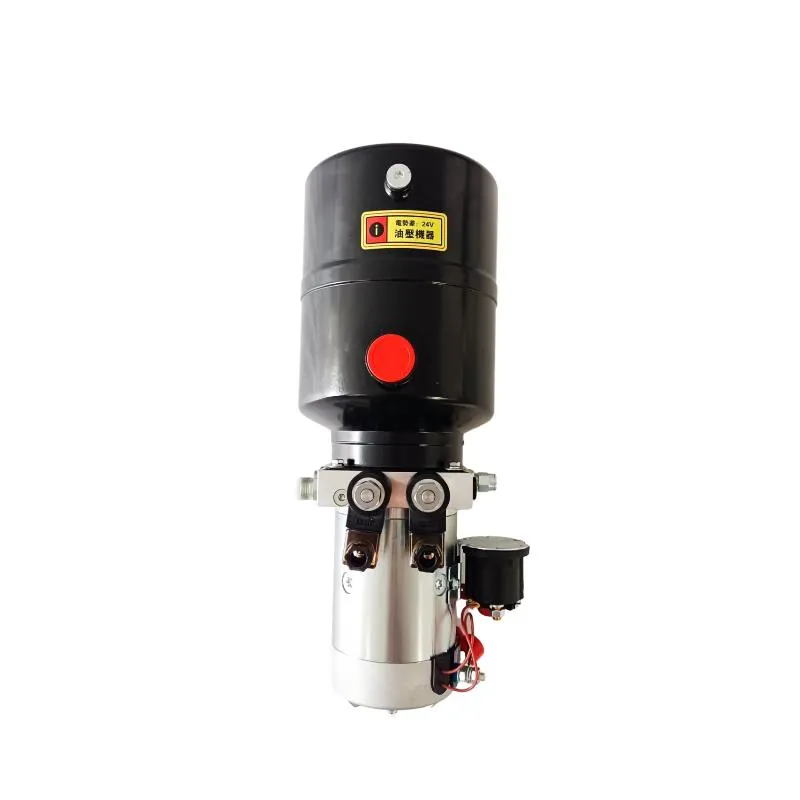ئاب . 14, 2024 04:46 Back to list
Exploring the Versatility and Functionality of Wrecker Hydraulic Cylinders in Towing Operations
Understanding Wrecker Hydraulic Cylinders
In the realm of towing and recovery operations, hydraulic cylinders play an indispensable role, particularly in wrecker systems. These powerful components are essential for lifting, hoisting, and manipulating vehicles that have become immobile due to accidents, mechanical failures, or other unforeseen circumstances. Understanding their operation, components, and applications can help in the effective use of wrecker trucks for recovery operations.
What is a Hydraulic Cylinder?
A hydraulic cylinder is a mechanical actuator that converts hydraulic energy into mechanical energy. It consists of a cylindrical barrel that houses a piston. When hydraulic fluid is pumped into the cylinder, it creates pressure that forces the piston to move, thus producing linear motion. This principle of operation is leveraged in various applications, but in the context of wreckers, it is critical in lifting and moving heavy loads, such as damaged vehicles.
Components of a Wrecker Hydraulic Cylinder
Typically, a wrecker hydraulic cylinder comprises several key components
1. Cylinder Barrel The cylinder itself, which contains the hydraulic fluid and houses the piston. It is usually made from high-strength steel to withstand the pressures generated during operation.
2. Piston This is the movable part inside the cylinder that is pushed by the hydraulic fluid. The piston usually has seals that prevent fluid leakage, ensuring efficient operation.
3. Rod Connected to the piston, the rod extends from the cylinder and is used to transmit force to the external environment, such as a lifting arm or tow hook.
5. Ports These openings allow the hydraulic fluid to enter and exit the cylinder, controlling the movement of the piston.
wrecker hydraulic cylinder

Applications in Wrecker Operations
Hydraulic cylinders are used extensively in wrecker trucks for different functionalities
1. Lifting Many wrecker systems employ hydraulic cylinders to lift heavy vehicles off the ground. This is particularly important in accident recovery, where the vehicle may be in an unstable position.
2. Boom Deployment Wreckers often feature booms that can extend and retract. Hydraulic cylinders are the driving force behind this mechanism, enabling operators to reach vehicles in difficult-to-access locations.
3. Wheel-Lift Mechanism This system uses hydraulic cylinders to lift the wheels of a vehicle off the ground, facilitating towing. This is a common technique used for repossessions and roadside assistance.
4. Tilt and Rotate Functions Advanced wrecker designs incorporate hydraulic cylinders to tilt and rotate parts of the structure, which aids in positioning and securing vehicles during recovery.
Maintenance and Safety
Regular maintenance of hydraulic cylinders is crucial to ensure their longevity and reliability. Operators should routinely check for leaks, inspect seals, and verify that the hydraulic fluid levels are adequate. Any signs of wear and tear should be addressed immediately to prevent accidents during operations.
In addition, safety protocols must be adhered to while operating wrecker trucks. Operators should be trained to understand the limits of the hydraulic system and should never exceed the manufacturer's specified load ratings. Proper use of personal protective equipment (PPE) is also essential to ensure safety during recovery operations.
Conclusion
Wrecker hydraulic cylinders are vital components in the towing and recovery industry, providing the necessary force to lift and manipulate heavy vehicles safely and efficiently. By understanding their construction, functionality, and maintenance, operators can enhance their operational effectiveness while ensuring safety on the job. In a world where mobility is essential, the importance of these hydraulic systems cannot be overstated; they play a critical role in restoring normalcy after breakdowns and accidents.
-
Fork Lift Power Units - Hebei Shenghan | Efficiency, Reliability
NewsJul.13,2025
-
1.5-Ton Turbocharged Cylinder-Hebei Shenghan|Hydraulic Solution,Energy Efficiency
NewsJul.13,2025
-
Auto Hoist Power Units-Hebei Shenghan|Efficiency&Industrial Lifting
NewsJul.13,2025
-
Double Acting Power Units-Hebei Shenghan|Hydraulic Solutions,Industrial Efficiency
NewsJul.13,2025
-
1.5 Ton Lifting Cylinder 70/82-40-290-535 - High-Performance Hydraulic Solution | Hebei Shenghan
NewsJul.13,2025
-
Fork Lift Power Units - Hebei Shenghan | Efficiency&Reliability
NewsJul.13,2025
